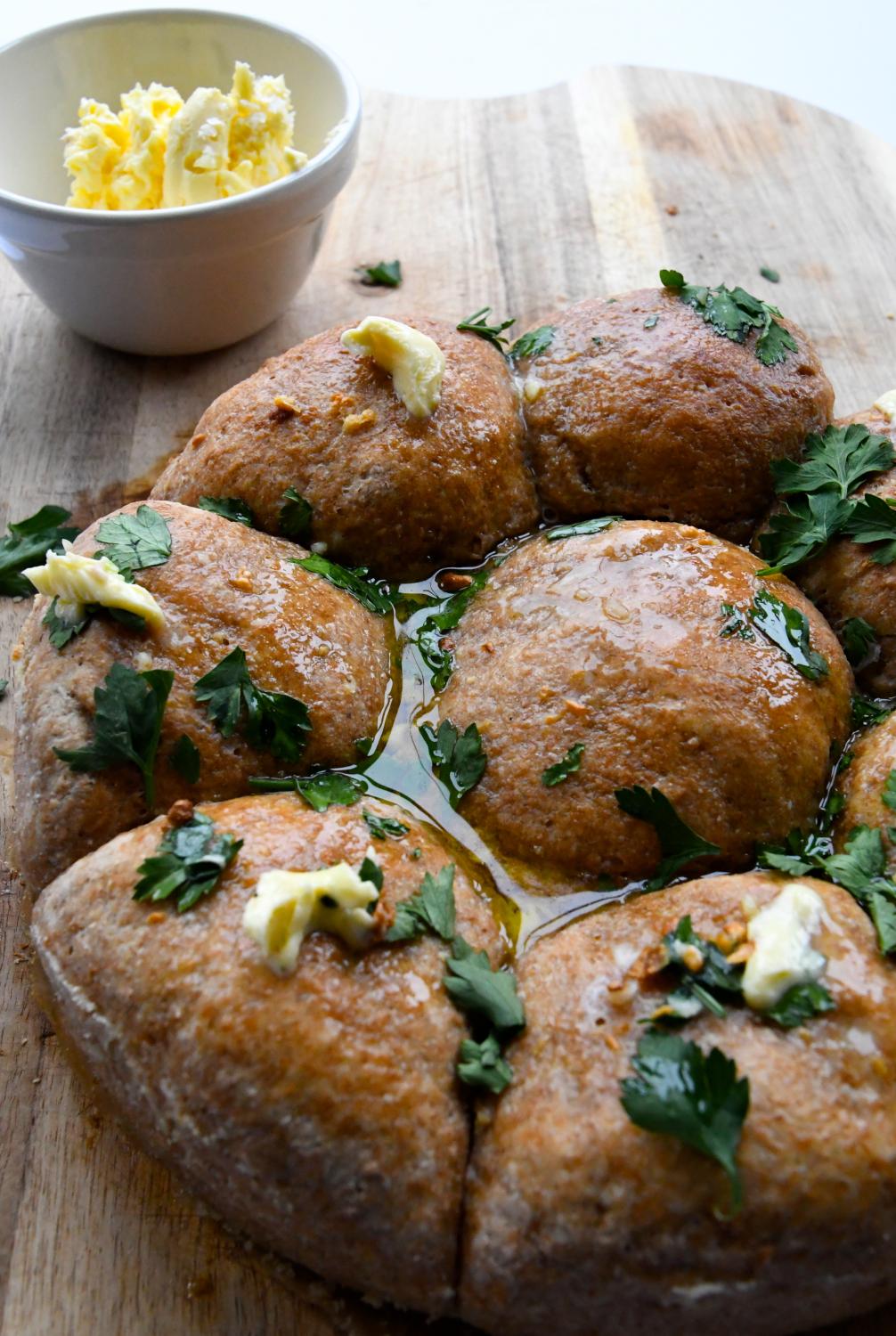Weigh the flour, salt and sugar into a large mixing bowl. Add the yeast and stir through to evenly distribute, followed by 300g of the water. Knead the dough until it is smooth and pliable (I like to start off kneading it in the bowl until the water is absorbed and then move it onto the work surface).
Add the additional 40g of water slowly, if it needs it – you will find the wholemeal bran particles soak up the water. Different wholemeal flours can absorb different levels of water, so add it gradually and tweak the amount to suit the flour you’re working with.
Shape the dough into a ball, and place it in a lightly oiled bowl covered with a tea towel. Leave it to prove at room temperature for one hour, or until doubled in size (this may take less or more time depending on the temperature in your kitchen).
In the meantime, make your garlic butter by mashing the crushed garlic through the butter thoroughly. Add a pinch of salt if you’re using unsalted butter. For variations, you could also add a pinch of smoked paprika, cayenne, fennel seeds, anything you fancy.
Prepare to line a 23cm springform non-stick round tin with baking parchment. Once you have cut out the parchment base and sides, before you place them in the tin, spread them generously with garlic butter.
Place the buttered parchment in the tin, and sprinkle semolina over it. If you don’t want to make a round version, you could do this straight into a baking tin instead.
Divide the dough into eight equal sized balls of just over roughly 100g each. Arrange in the cake tin, cover, and leave to prove until doubled in size (roughly 1 hour).
Preheat your oven to 180°C. Take half of your remaining butter, which will be used to glaze the buns. It needs to be very soft to avoid tearing or squishing the dough and the volume you will have obtained. If it needs softening up, warm it a touch a pan over a low heat until it is just soft enough to glaze the dough without tearing it, but it should not be hot. Liberally spread the buns with the softened butter.
Bake your buns for 25-30 minutes until baked through.
When your buns are ready, place them on a wire rack and dot the remaining butter over the top so that it melts into the bread. Sprinkle with fresh herbs.
As an alternative to melting the last remaining butter into the top, you can whip it up with an electric whisk with a tablespoon of buttermilk (or half a tablespoon of Greek yoghurt and half a tablespoon of milk, to loosen it) and serve it alongside the bread for spreading on it instead.
Although I’ve been told you should always wait for the bread to cool properly before eating, in this instance it’s brilliant while still warm. Best eaten very fresh on the day of baking.


